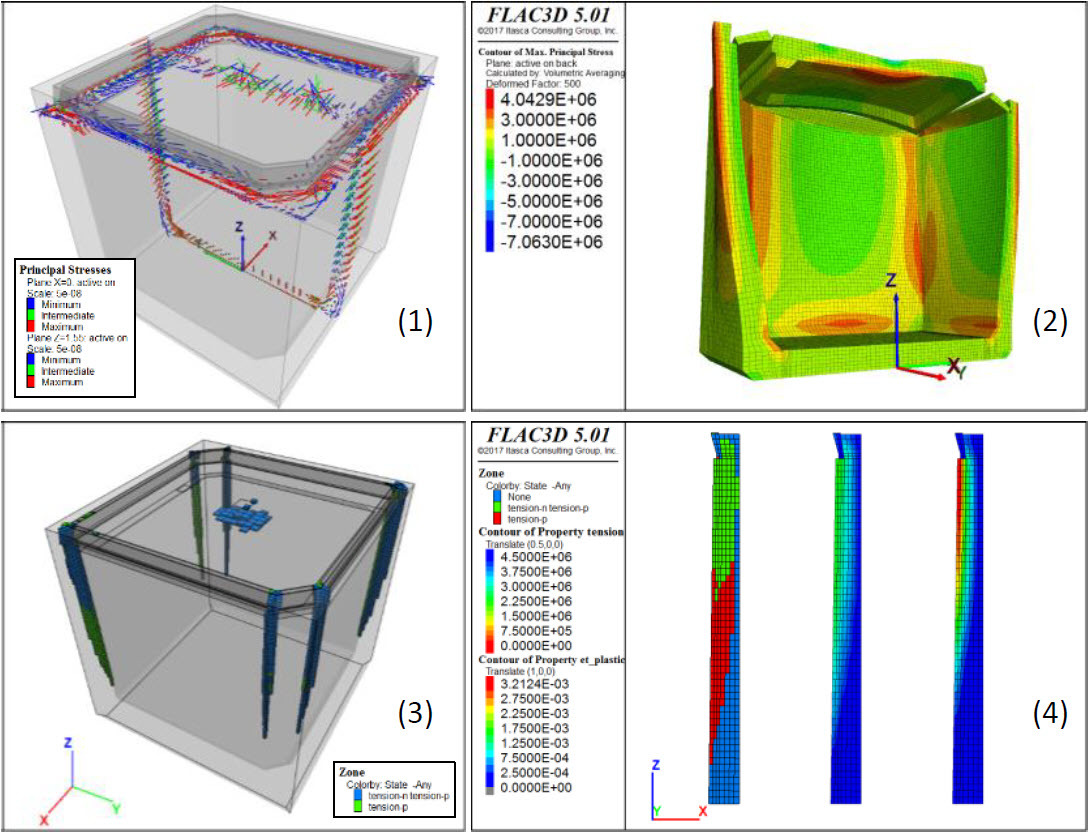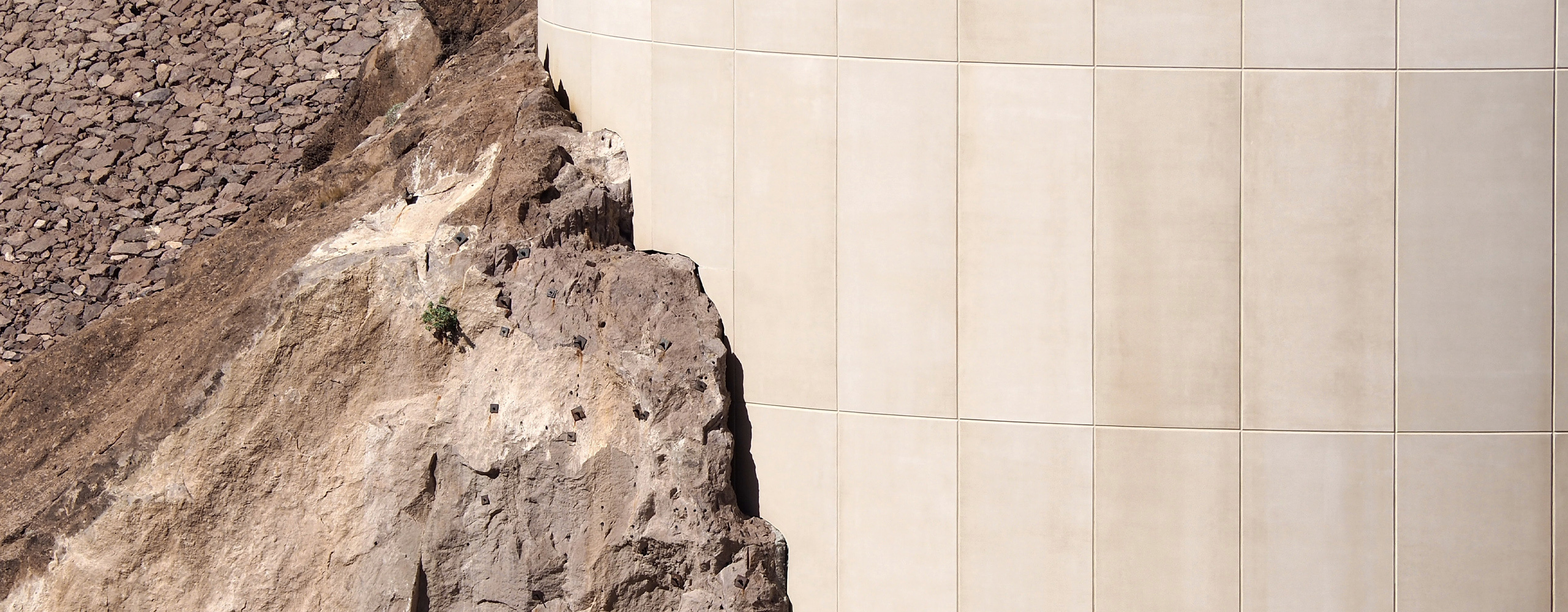Mechanical behavior of CBF-K canisters stored at CSA under internal gas pressure
Project Description
In order to update the acceptance criteria of reactive metals in the Aube repository center (“CSA”, France) for low and intermediate-level short-lived radioactive waste, Itasca teamed with EGIS to study the mechanical behavior of graveled (OG) [1] and concreted (OB) structures containing concrete or steel canisters.
Some canisters contain reactive metal waste, e.g. aluminum, which may generate hydrogen gas by oxidoreduction. Andra needs to define the maximum admissible quantity of these metals per canister, that insures no damage may be induced by a rise of gas internal pressure. Cubic fiberconcrete canisters labelled “CBF-K”, stored in graveled structures are of special concern. A first step is to evaluate the maximum admissible internal pressure.
Itasca's Role
Based on the general study [1], phenomenological conceptual analyses are carried out to identify with Andra the most pessimistic cases. Eight scenarios are considered, covering canister location in the structure, defects in the lid, and loads corresponding to states before and after the closing of the storage.
An analytical analysis on a simplified structural scheme first estimates the likely level of internal gas pressure causing canister failure, to better define the pressure steps in the loading procedure. A series of numerical simulations, purely mechanical, for “CBF-K” canisters experiencing internal a gas pressure rise is conducted using FLAC3D. The corresponding maximum admissible gas pressures, for which plasticity starts to span the thickness of any element of the container (Fig. 4), are determined.
Project Results
The values of maximum admissible gas pressures for the eight scenarios are consistent with the analytical one.
The canister response to gas pressure rise is analysed in terms of:
- Stresses (Fig. 1), specially principal tensile stresses (Fig. 2)
- Displacements (Fig. 2)
- Force distribution between canisters
- Plasticity (Fig. 3, 4), plastic strain and residual tensile strength (Fig.4)
The critical parts of the canister during the rise of internal gas pressure are identified.

Fig. : CBF-K canisters with asperities on the lid and apical void under maximum admissible gas pressure. Principal stresses on sections X = 0 and Z = 1,3 m (1) ; Major principal stress on a 500-time-exagerated deflection (2) ; Plasticity states in the canister (3) and on the section Y = -0,75 m et X > 0 (4)

